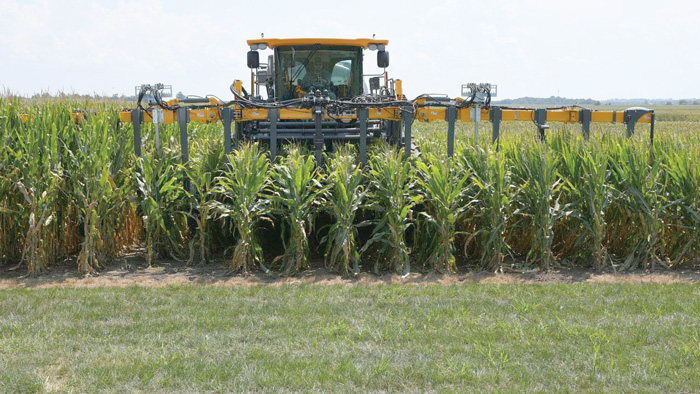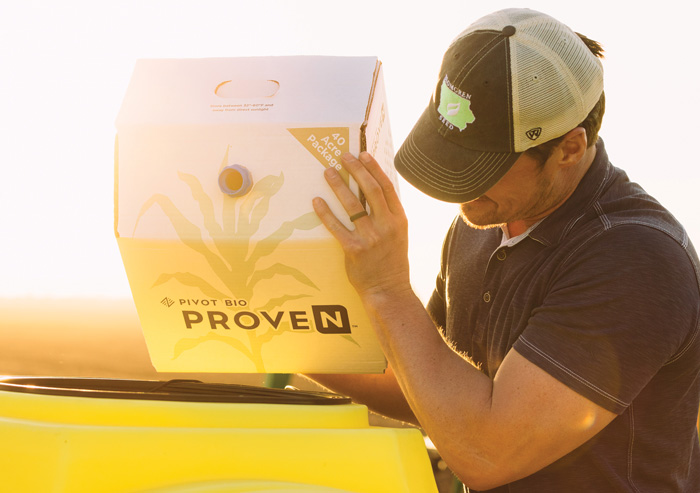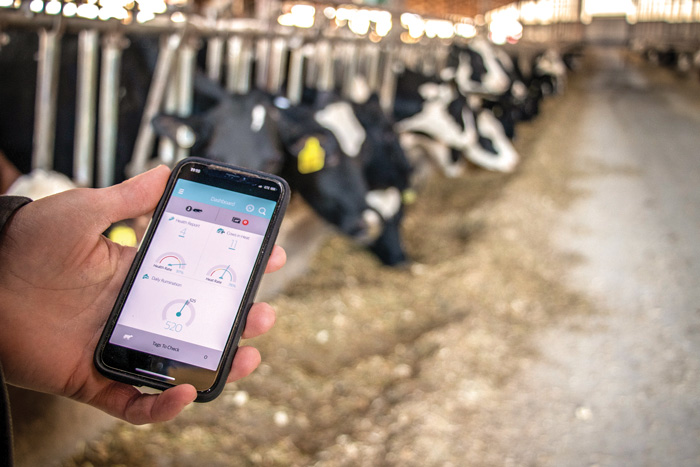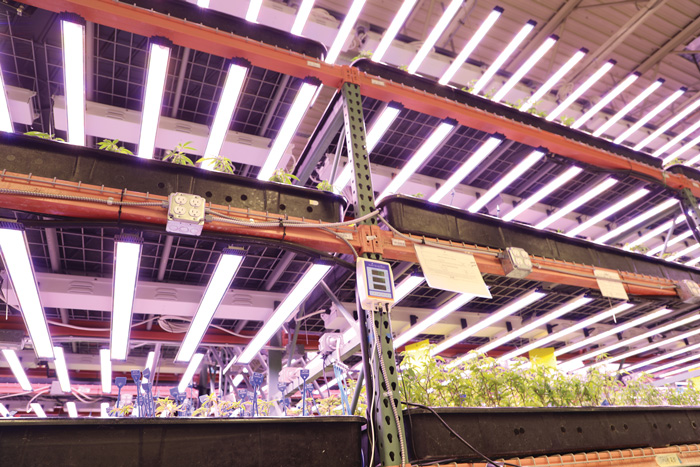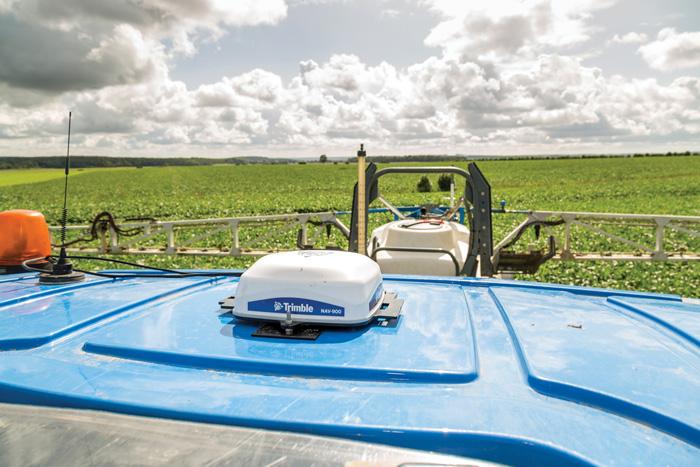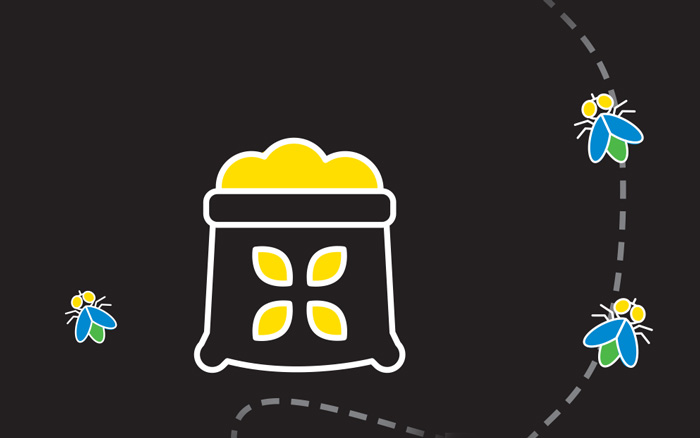
Solving Food Loss From Seed to Market
Scientists, entrepreneurs, and nongovernmental organizations are making strides in research and technology to reduce postharvest food losses while facing increasingly unstable climatic and economic conditions.
Article Content
Embracing homely but edible fruit in the produce section of the supermarket has become de rigueur for consumers looking to strike a blow against food waste. But in the vast global battle, it’s far more important to reduce losses of crops and animals on the farm, to preserve them before they get to their end markets, and to raise foodstuffs more efficiently in the first place.
Indeed, while food waste at the supermarket and household levels has been getting more visibility in the media—and in the form of venture capital backing of startups aimed at the problem—the bigger culprit of agricultural waste hasn’t been addressed with as much vigor. And so it remains the larger problem.
With a population projected to reach 10 billion by 2050, the world will have to produce about 56% more food than it did in 2010. Yet arable land per capita already has shrunk by about half in the past 60 years. If postharvest grain loss alone was completely eliminated, the world would gain virtual territory equivalent to three times the cropland area of France, according to consulting firm McKinsey. So the pressure is on to use much more of what is already produced.
Global powers have launched broad attacks. In 2015, the United Nations announced the ambitious goal of halving worldwide food waste by 2030. But few experts see that kind of progress.
“There’s less waste in the field, but we still have a long way to go to improve it further and make it applicable to smaller-scale businesses as well,” says Meiko Martin, product manager for Trimble Autonomous Solutions, a provider of precision agriculture technology. “And in less developed countries we need to have processes where it’s easier to empower farmers and optimize their workflow.”
The Scope of the Problem
Waste on the farm ranges from the spectacular to the mundane. Global headlines followed the biblically destructive path of massive swarms of locusts across Africa for a year or so beginning in late 2019, when tens of millions of the finger-sized insects descended on the land. They devoured millions of acres of crops and pastures before a United Nations pesticide-spraying campaign brought them under control.
More significantly, and largely out of sight, millions of tons of grains and other foodstuffs quietly rot in fields or open storage bins around the world every day. Losses of rice, wheat, and other cereal grains—which account for 70% of all calories consumed—are particularly striking. About 20% of global grain production is lost, according to some estimates; 20%–30% of rice in Asia is wasted in post-production processes from harvesting to milling; and about 30% of cereal in the Arab world is wasted between production and consumption.
In some ways, reasons for this waste are the same across the globe, including outright losses from spoilage, destruction, and, most unfortunately, deliberate plowing under. There are inefficiencies and waste in inputs from water to fertilizer to pesticides. And there is vast unrealized potential to optimize yields with more precise fertilization and watering and better science.
Also, whether they’re in a maize field in Tanzania or a wheat field in Kansas, farmers everywhere are vulnerable to the vagaries of agriculture that can turn promised bounty into devastating detritus.
“Farmers may plan for a huge harvest, and the market isn’t able to take the harvest,” says Ku McMahan, senior team lead at the U.S. Agency for International Development (USAID) and head of the U.S. arm of Water and Energy for Food, a partnership with the European Union and leading nations that helps local farmers and communities worldwide. “Or a climate event comes suddenly, and you have a freeze or a flood. All of those things can make it where, while the farmer had such a great plan for when the harvest is going to come, they’re not able to complete it in the end.”
A Varied Landscape
But there are stark regional differences in the types and magnitude of food loss. Developed nations suffer much less because of their economic and technological advantages. Also, they devote massive resources to preventing waste because agriculture is an export engine in addition to a means of native subsistence. The United States and Brazil, the world’s No. 1 and No. 2 food exporters, respectively, are the prime examples of this.
In the developing world, however, moist climates, broad pestilence, and lack of infrastructure destroy huge portions of crops every year. The biggest crisis is in Sub-Saharan Africa, where postharvest losses are estimated at $4 billion a year, according to the United Nations Environment Programme. In Kenya, for instance, about 20% of grain cereals are lost after harvest, including an estimated 12% of maize. Up to half of fruits and vegetables don’t even make it to the marketplace.
“There are problems in harvesting, threshing, drying, storage, initial processing, and transportation,” says Michael Clark, a food systems researcher at the University of Oxford. “There may not be a huge amount of access to storage, and pests will consume more of the apple. And the infrastructure isn’t as good: Even if you can harvest the food, you may not have access to a silo to prevent your maize from rotting, or access to refrigeration so your food doesn’t rot before it’s sold.”
The agricultural waste challenge in Sub-Saharan Africa has persisted for decades. It continues in damningly simple ways, such as the scarcity of cold storage centers for onions and tomatoes that are produced on farms in Ghana.
“There is absolutely no way for farmers to move their products and have them properly sorted out and repacked,” says Kofi Mansu Essuman, executive member of the Institute of Packaging in Ghana. He adds that the temperature in Accra, Ghana’s capital, has reached the high 80s early this year. “It’s warm and very humid, and this contributes to spoilage.”
Or consider how vegetable farmers in Nigeria continue to use relatively flimsy baskets made out of native fiber to transport their produce to urban markets, allowing tomatoes and other produce to be crushed in the bed of a truck by the sheer mass of baskets of crops on top of each other. Plastic crates for this purpose loom as a solution, but they’re vastly under-deployed.
“Attempts to solve these problems haven’t gone well over the years,” says Chijioke Osuji, a food technologist and former policymaker in Nigeria. “Sometimes it’s just because the government isn’t serious enough to face it. Then there are problems in the private sector, which is not too willing to invest in aspects of a solution such as recycling.”
Indeed, in this region, government impotence often is joined by negative structural economic factors, including a general and worsening lack of labor on the farm and market incentives that perversely work against cutting waste. For instance, if farmers foresee big wastage in a season, one way they try to avoid it is by releasing their grains onto the market more quickly, which collectively depresses prices. But governments and nongovernmental organizations (NGOs) are trying to create more incentives for farmers to participate in loss-reduction programs.
Science and technology also are coming to the fore with a host of solutions for agricultural, storage, and transportation waste and inefficiency. Here are some of them.
• Crop Editing and Biologics. One area of research is focused on improving crops at the seed level. Bayer, for instance, has developed what it calls “short-stature” corn that it expects to make available to growers within the next few years. The corn has stalks that are about one-third shorter than those of conventional hybrids, meaning they require less fertilizer and water and aren’t as easy for high winds to wreck. They’re more stable and demonstrate improved tolerance of traditional scourges of corn crops, including root lodging, stalk lodging, and green snap.
Researchers also are working with organisms—from microbes to insects—to boost yields and prevent crop damage. One company, Pivot Bio, supplies a microbe that attaches itself to plant roots and converts nitrogen from the air into ammonia, just as a chemical fertilizer would do. The organisms in liquid form are added along with seed before the soil is folded over. Pivot Bio’s microbes will supply about 40 pounds of nitrogen per acre, while the average corn farmer has to apply 150–160 pounds of nitrogen-supplying compounds per acre.
“The goal is to shift where farmers are spending their dollars,” says Karsten Temme, Pivot Bio’s co-founder and CEO. “Ideally, it’s the same price. But lately, commodity prices have skyrocketed, so fertilizer has become more expensive. That means our product is the cheaper option for farmers these days.”
EndoBiome is a startup launched by a University of Houston professor of microbiology that developed and patented a gnotobiotic rhizobacterial isolation plant system (GRIPS) to select for and culture microbes that form close associations with plant roots. The company discovers novel rhizobacteria that promote plant growth.
For example, working with his students at the school, EndoBiome founder and CEO Michael LaMontagne is isolating bacteria from salt marsh plants that ultimately could boost growth and yields of crops in desert environments with marginal soil. “They’re thriving in full-strength sea water, and they’re a grass not that different from wheat,” LaMontagne explains. “How are they able to tolerate that high salinity? One thing that might help is microbes called halophytes. They may help the crops tolerate salinity and desertification.”
• Improved Monitoring. Farmers need to be able to see exactly what’s happening on their farms and to have more capability to respond in real time. UK-based startup Sunlight.io is deploying what it calls “edge” technology to monitor crop growth, identify potential issues or threats to crops, track irrigation systems, monitor the use of fertilizers, and analyze soil quality. The company creates computer vision systems, deploys them on drones, and then applies artificial intelligence and machine learning to the data it collects.
“Farmers can make smarter decisions,” says Julian Chesterfield, Sunlight.io’s founder and CEO. Kosten Metreweli, the company’s chief strategy officer, explains: “If you’re farming wheat or an apple orchard, you’re able to monitor these very large areas with minimum human interaction and monitor on a micro scale what’s going on with all the growth in that environment. You can report it on an intraday basis so you can respond to problems extremely quickly, such as pest infestation or weed growth.”
Monitoring technologies may prove even more useful in livestock production. “Losses can be of a magnitude that’s much larger than we think,” says Jeroen van de Ven, lead of Merck Animal Health. “Even if animals stay healthy, there’s a bucket where they’re not living at 100% of their welfare. And welfare equals productivity.”
To combat this, Merck identifies and tags about 500 million animals a year—about half the global tagging market, according to van de Ven. The tags monitor and predict the health issues of individual livestock, such as dangerous respiratory diseases. And by gathering and crunching data from all those animals, Merck can help farmers and ranchers alter how they raise their herds and further automate functions such as turning on sprinklers to ease heat stress.
• Indoor Farming. Raising vast quantities of food plants indoors has been a pipe dream for decades. Now a growing number of indoor ag initiatives are slashing costs and scaling up thanks to advances in hydroponics, digital watering and feeding systems, energy-efficient lighting, and increasingly sophisticated monitoring networks leveraging the Internet of Things (IoT).
In January, for instance, Upward Farms announced its plans to build what it describes as the world’s largest indoor vertical farm, stretching almost six acres in Luzerne County, Pa. The 250,000-square-foot facility is scheduled to begin operation in early 2023 and supply microgreens throughout the Northeast United States “and beyond,” according to a press release. Even Walmart is getting into indoor farming by investing in the startup Plenty, which will distribute its leafy greens produced in Compton, Calif., to all of Walmart’s California stores beginning later this year.
“It doesn’t make a whole lot of sense for soybeans or corn, and you’re not going to be replacing thousands of acres in Salinas Valley in California,” says John Purcell, CEO and president of Unfold, a startup providing digital controls and seed for indoor farms. “It’s where are you looking for opportunities to provide fresh produce, locally grown that can be gotten to consumers much closer to harvest time and reducing transportation time.”
Automated systems can be replicated seven or eight layers high and provide just the right “recipe” of light, irrigation, temperature, soil moisture, and nutrients for indoor crops. Tech systems collect data and automatically adjust to ensure environmental stability and optimize growth. Beyond microgreens, entrepreneurs like Purcell now are targeting “the full salad,” he says. “Lettuce, spinach, tomatoes, cucumbers, peppers—those last three are the biggest crops in glasshouse production.”
“The tipping point is really rapidly being reached, because you can use 95% less water in an indoor grow compared with conventional,” says Bryan Fried, president and CEO of Rapidgrow LED Technologies, which makes lighting systems for indoor farms.
• More Precise Inputs. Innovations are also being developed to help traditional outdoor farmers reduce and make better use of their inputs. Many ag-implement, seed, and farm supply companies are working with governments, universities, and NGOs to granularize farm inputs instead of broadcasting them. This can reduce erosion, support water retention and nutrient availability, increase organic matter accumulation in the soil, and enable higher crop productivity.
Often related to and intertwined with digital monitoring, these input systems include software tools that integrate data from satellites, field sensors, irrigation systems, and drones, creating billions of data points that help farmers prevent problems before they start.
Semtech, for instance, uses LoRa—long-range and low-power—IoT technology to monitor the saturation of the soil in fields and adjust farmers’ irrigation practices to make sure their crops get enough water without wasting any. A management application resides either on a cloud-based or dedicated server and can automatically open or close irrigation valves based on the readings.
“When it comes to implementing this type of technology, we’ve found that farmers are very willing to adopt,” said Marc Pégulu, vice president and general manager for Semtech’s Wireless and Sensing Products Group. “Farmers are much more tech savvy than they’re given credit for.”
Trimble has a tool for corporate farms called Connected Farm, a cloud-connected system that helps operators plan inputs precisely. “You’ve got visibility of the whole farm, and you can assign certain paths to the machine and then send them to the machine and schedule jobs,” Martin says. “And then you have requirements such as not spraying in high winds to control the application. The operator just controls steering the machine, but everything else is automated already, including speed control.”
• “Dry” Supply Chains. Moisture and insects are the biggest wasters of agricultural output, and they work together.
In Kenya, startup Miyonga Fresh Greens provides European consumers with fresh produce and dried and powdered fruits. As founder and CEO Yvonne Otieno built her export-oriented business in Nairobi, it required farmers from around the region to transport their own fruits and vegetables from the surrounding countryside. Not only was this costly, but it produced a lot of waste between the farmers’ gates and the Kenyan capital.
With the help of Kenyan government agencies and USAID, Otieno invested in a mobile processing facility that is essentially a 40-foot shipping container with an integrated dryer. Miyonga can move the unit from one site to another depending on local conditions and harvest timetables, and it dries farmers’ crops at those aggregation sites. Recently, Otieno installed a 1.8-kilowatt solar generator on top of the unit and a battery bank that ensures food processing can occur even on cloudy days or after sunset.
“This solves two problems: waste on the farm and finding transport to get crops to market,” says USAID’s McMahan. “If you bring the processing close to the farmer and use solar power, you don’t have to use gas to take it so far and you don’t have to use dirty diesel fuel near the farm that may have come from a coal or gas-fired power plant.”
Kent Bradford, a professor emeritus and former director of the Seed Biotechnology Center at the University of California, Davis, has proposed implementing a global “dry chain” to cut humidity-related grain losses. It refers to the initial dehydration of grain to levels that prevent fungal growth, followed by storage in moisture-proof containers (see sidebar on page 34). The concept is analogous to the “cold chain” that maintains the quality of fresh produce through continuous refrigeration.
“This isn’t an enormous problem in most of the United States or other northern climates, because once you harvest it and put grain into the silo, it freezes,” Bradford says. “But when you get into the tropics, it’s an enormous—but largely unrecognized—problem. If you dry crops there and put them uncontained, they just absorb water right back from the atmosphere.”
Increasingly popular components of a dry chain include aluminum-based desiccant beads that are especially effective in extremely humid climates such as Bangladesh. There, millers traditionally used heaters to dry the grain, which consumes a lot of energy. Now, in cooperation with the Bangladesh government, grain buyers purchase stocks of drying beads and lay them over grain stored in barrels.
• Advances in Handling. Often, it’s not storage but handling of crops that creates waste, especially with produce that can be easily bruised and ruined. In Brazil, for instance, huge losses occur in the government-run food distribution centers (known as Ceasas) that can be found in every provincial capital. But for exported fruit such as mangos and papayas, Brazil has developed edible coatings made of carnauba wax that increase shelf life.
Also, the Brazilian Agricultural Research Corp. (Embrapa) has been deploying new paper packaging for distributing mangos, papayas, and strawberries to supermarkets, replacing the wooden crates that caused the fruit to bruise. A digital scanner “reads” the fruit and prints descriptive information on the paper packaging for distribution.
“We need to expand the use of these technologies,” says Gustavo Porpino, a marketing specialist for Embrapa. “We need a wider effort of technology transfer, especially targeting small and medium-sized producers of perishable fruits and vegetables. And levels of government need to interact more in building public-private cooperation aimed at mitigating food waste.”
Whether it’s through improving harvest and slaughter production and protection in the end, or by developing better inputs from plant biology to precision fertilization, agriculture businesses, national and global governments, and NGOs must significantly step up their performance in the immediate and near-term future to avoid a food insecurity cataclysm in the long term. If they don’t, experts in this arena believe, other gains made across the spectrum of food waste reductions won’t be enough to avoid catastrophe.
Key Takeaways
- While food waste at the consumer level gets more media attention, the bigger culprit of food loss occurs before it ever reaches the consumer.
- In the developing world, moist climates, broad pestilence, and lack of infrastructure destroy huge portions of crops every year.
- Scientific and technological innovations offer promising solutions for agricultural, storage, and transportation waste and inefficiency.


